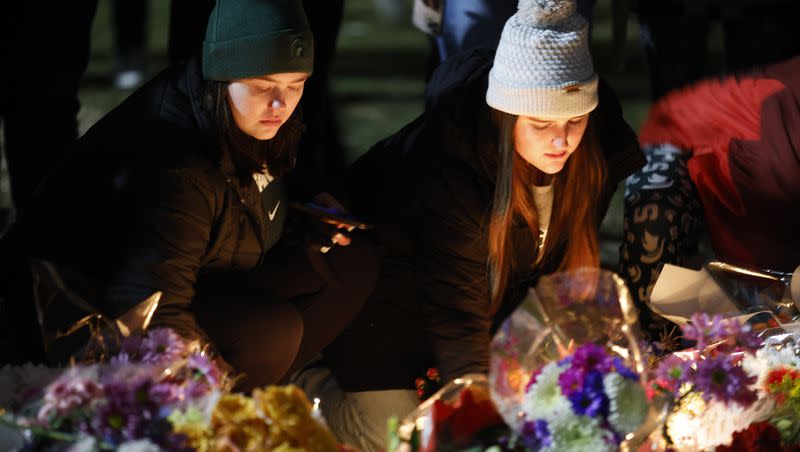New data projects a historic decline in murder rate in 2023. Experts explain why the rate is expected to drop

A new report is showing a historic annual decrease in murders across the U.S.
With a near 13% drop in the murder rate as measured by AH Datalytics, the data indicates that 1,266 fewer murders occurred in 2023 (8,656 total) compared to 2022 (9,922) across 177 U.S. cities.
The data firm projects that across the country, there will be 18,456 recorded murders in 2023 compared to 21,156 in 2022. The 18,456 is still higher than pre-pandemic levels, however, as the 2019 number the firm had was 16,619 murders. According to the FBI Uniform Crime Report, the estimated number for 2019 was around 16,425 murders.
In other words, if the data projections are correct, in 2023, there will have been a U.S. murder rate of 5.5 per 100,000 people.
“The sample suggests either the largest or one of the largest national declines in murder on record occurred this year (both in terms of percent and absolute decline),” Jeff Asher, co-founder of AH Datalytics, wrote on Substack.
The report also indicated that the murder rate in Salt Lake City will drop from 16 in 2022 to 15 in 2023. According to a KSL.com article, there were 80 homicides across the state in 2022, which was the lowest number in four years. KSL.com reporter Pat Reavy wrote an article about the 16 victims of homicide in Salt Lake City in 2022.
It’s not just murder that’s down; Asher wrote that there’s an overall drop in criminal activity.
Looking at the Uniform Crime Report, Asher wrote, “Americans tend to think that crime is rising, but the evidence we have right now points to sizable declines this year (even if there are always outliers). The quarterly data in particular suggests 2023 featured one of the lowest rates of violent crime in the United States in more than 50 years.”
Results of a Gallup poll released last month indicate that Americans of all political affiliations believe that crime has increased in the U.S., with 92% of Republicans saying it has and 58% of Democrats. People across all regions in the country and residents in everywhere from big cities to rural areas say that crime has increased from 2022 to 2023.
Related
The perceptions may differ from recorded crime data produced by cities and the FBI.
While the FBI hasn’t released year-end crime data, Asher said that “the publicly available data from cities and quarterly data from the FBI show large declines in murder and most other UCR Part I crimes this year even if we won’t know the exact percentages for a while.”
Part I crimes include criminal homicide, rape, arson, motor vehicle theft, larceny-theft, burglary, aggravated assault, robbery and human trafficking.
The reasons for the drop in the murder rate across the U.S. are difficult to ascertain, experts have indicated. Anthony Smith, executive director of Cities United, said that the end of the pandemic may have had a positive impact on decreasing the rate of violent crime.
“Structures and systems that folks relied on are back open and driving. A lot of this took place during COVID time when a lot of stuff was shut down and folks didn’t have access. There was a lot of bleakness, there was just nothing,” Smith told The Atlantic. “The world opened back up.”
John Roman, senior fellow and director of the NORC Center on Public Safety and Justice at the University of Chicago, also attributed the decline in the homicide rate to communities opening back up after the pandemic.
“Much of the rise in homicide is directly tied to COVID — from young people being isolated from social supports and being confined in volatile neighborhoods to a crisis in police staffing,” Roman said in a report put out by the Council on Criminal Justice.
“While these incendiary conditions have softened, little has changed about the risks that lead to violence in historically disadvantaged places. Homicide rates will likely continue to fall to pre-pandemic levels but are unlikely to fall any further until the underlying risk conditions improve,” Roman continued.
Violence reduction plans may have contributed to a drop in the homicide rate, Ruth Abaya, senior director of Health Systems and CVI Integration at The Health Alliance for Violence Prevention, said in the report. While this is “challenging to measure,” Abaya indicated that “it’s important to investigate how effect those (violence reduction) plans were as one of many factors that led to a reduction in homicides.”
Bipartisan legislation passed might have also contributed, according to U.S. Deputy Attorney General Lisa Monaco.
“Something that we are doing is using new authorities from the most significant gun safety law that has passed in 30 years ... the bipartisan Safer Communities Act that passed last year. And with that tool, we’ve charged more than 300 defendants with new gun trafficking and illegal trafficking,” Monaco told ABC News. “We’re using tools like crime-gun intelligence, the ability to trace the gun and the spent shell casing from a crime scene to identify who’s that shooter, how many violent crimes have they been involved with.”

